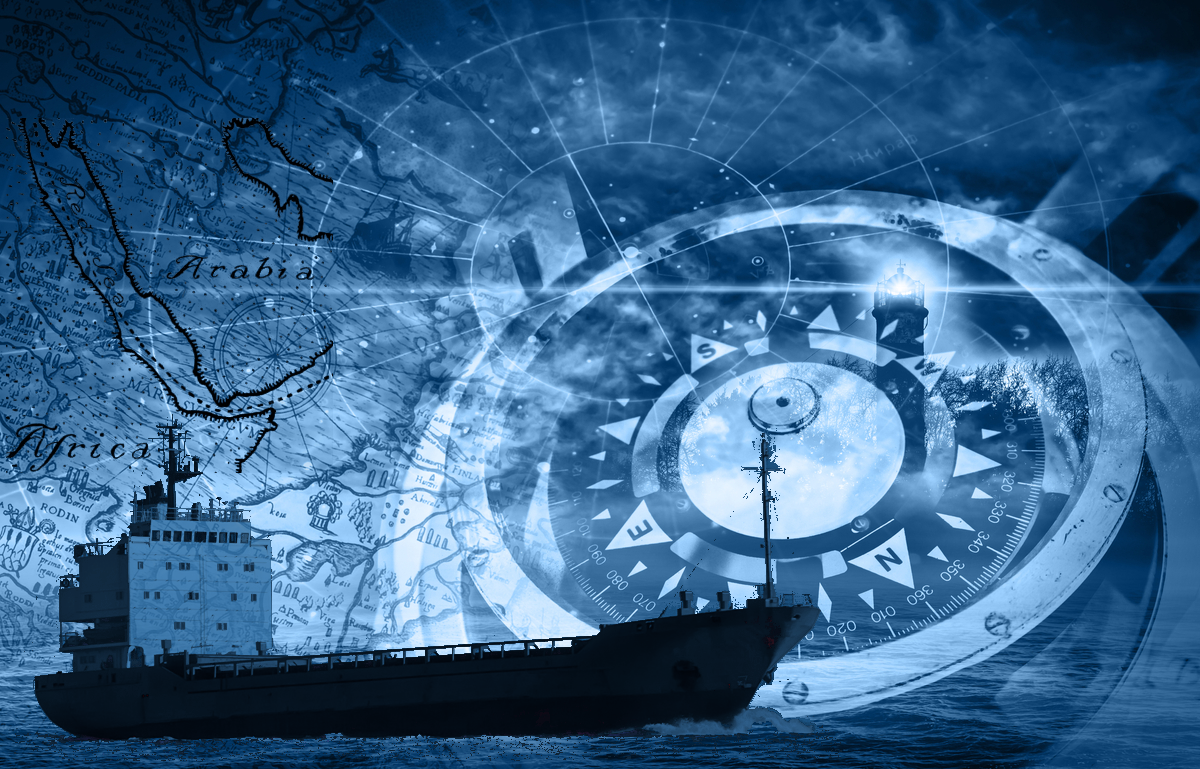
Recent events remind us how big the world is and how vital ocean supply lines are for the global economy. Nearly 90 per cent of global trade is carried by sea-going vessels. That means maritime shipping lies at the very heart of the global logistical system. Protecting international sea lanes is a critical responsibility for the world’s navies. You might recall that during the first decade of this century, piracy was a growing concern with Somalia at the epicenter of pirate activity. The cost of these criminal activities were high in terms of time, money, and lives. At the time, Ron Widdows, former chairman of the World Shipping Council, reported that piracy was costing “the global shipping industry anywhere from $3.5 billion to upwards of $8 billion a year.”[1] Nations of the world saw this challenge as a shared responsibility and partnered with commercial shippers to address it. As a result, piracy activity dramatically decreased by 75 percent between 2010 and 2022. The world now faces new maritime threats. From Russia in the Black Sea to Iran-backed Houthi rebels in the Red Sea new security risks have emerged. Reporter Drew Hinshaw and Daniel Michaels note, “The modern economy rests on a rule so old that hardly anybody alive can remember a time before it: Ships of any nation may sail the high seas. Suddenly, that pillar of the international order shows signs of buckling.”[2] They go on to explain, “Russia’s invasion of Ukraine has turned the Black Sea into a gauntlet of warships and mines, navigated by grain-laden bulk carriers sailing under the fragile consent of two warring states. Near the Horn of Africa or the Strait of Malacca, pirates who had once seemed quelled have roared back, crimping sea traffic. In the South China Sea, Beijing has asserted sovereign control over parts that have long been international waters, while its push to reunite Taiwan with the mainland raises questions about future transit through the Taiwan Strait.” Unfortunately, these security concerns are not the only challenges international shipping is facing. Climate change is affecting another crucial waterway, the Panama Canal. Journalist Andrew Freedman explains, “Geopolitical risks in the Red Sea and extreme weather in Central America are converging, jostling global supply chains fed by the Suez and Panama Canals.”[3] Neither security risks nor climate risks are easily addressed. In this article, I want to address the security risks. In the concluding part of the article, I will discuss climate risks. Security Troubles There are a couple of good reasons Hinshaw and Michaels believe long-cherished freedom of the seas could buckle. The first reason is lack of international cooperation. They explain, “Not long ago, the world’s most powerful navies cooperated to secure the seas. When Somali sailors seized two Chinese vessels in 2008, Beijing sent warships to help the U.S. patrol the Horn of Africa. After the Cold War, Russia teamed up with the U.S. military to clean nuclear waste from the Arctic Sea, before melting ice opened new shipping possibilities. For now, there is little chance those three world powers could summon common cause.” The second reason is the neglect nations have shown their navies. They write, “The U.S. can still call on allies in Europe or Japan, whose navies once spanned the globe. But today they are lightweights with few warships or skilled personnel they can mobilize in a crisis: The British navy has fewer sailors than it did during the Revolutionary War 250 years ago, when its total population was one-seventh its current size. The U.S. Navy, sidelined during decades of counterterrorism campaigns, is stretched securing not just shipping lanes but also undersea data cables and gas pipelines that have become equally important to economic output.” Chinese Territorial Claims China has both territorial and economic ambitions in the maritime arena. Staff members from the Council on Foreign Relations’ Center for Preventive Action (CPA) observe, “China’s sweeping claims of sovereignty over the sea — and the sea’s estimated 11 billion barrels of untapped oil and 190 trillion cubic feet of natural gas — have antagonized competing claimants Brunei, Indonesia, Malaysia, the Philippines, Taiwan, and Vietnam. As early as the 1970s, countries began to claim islands and various zones in the South China Sea, such as the Spratly Islands, which possess rich natural resources and fishing areas.”[4] In addition to claiming expanded exclusive economic zones (EEZs), the Chinese insist there are restrictions to freedom of navigation (FON) through EEZs. That’s one reason China has been aggressive in its efforts to seize maritime territory. The CPA reports, “In recent years, satellite imagery has shown China’s increased efforts to reclaim land in the South China Sea by physically increasing the size of islands or creating new islands altogether. In addition to piling sand onto existing reefs, China has constructed ports, military installations, and airstrips — particularly in the Paracel and Spratly Islands, where it has twenty and seven outposts, respectively. China has militarized Woody Island by deploying fighter jets, cruise missiles, and a radar system.” They go on to note, “To protect its political, security, and economic interests in the region, the United States has challenged China’s assertive territorial claims and land reclamation efforts by conducting FONOPs and bolstering support for Southeast Asian partners.” The Taiwan Strait is another area of contention. Jill Goldenziel, a professor at the National Defense University, reports that in June 2023, “China’s Foreign Ministry declared … that the Taiwan Strait is not international waters, but ‘are China’s internal waters, territorial sea, contiguous zone and exclusive economic zone in that order.’”[5] She concludes, “The Taiwan Strait, indeed, contains international waters. China’s claim to the contrary can harm world trade, freedom of navigation, and the rule of law.” Houthi Red Sea Attacks The crisis in the Red Sea was set off by the Israel-Gaza conflict and when Houthi terrorists claimed the attacks were being made in support of Gaza residents. In an attempt to decrease tensions in the Red Sea, the U.S. Navy has been charged with helping to stop weapons flowing to the Houthis. In January, tragedy struck during one such operation. Journalist Lolita C. Baldor recounts what happened.[6] She writes: “Under the darkness of night, in the roiling high seas off the coast of Somalia, members of the U.S. Navy’s SEAL Team 3 began to climb aboard an unflagged ship that was carrying illicit Iranian-made weapons to Yemen. As Navy Special Warfare Operator 1st Class Christopher J. Chambers began boarding the boat, he slipped, falling into a gap the waves had created between the vessel and the SEALs’ combatant craft. As he went under, Navy Special Warfare Operator 2nd Class Nathan Gage Ingram jumped into the gap to try to save him, according to U.S. officials familiar with what happened. It was an instinctive act, honed by years of training, one teammate going to another’s aid. But weighed down by their body armor, weapons and heavy equipment, the two SEALs plunged into the depths of the Arabian Sea and died.” Other nations have also joined the effort to stop attacks in the Red Sea. Even so, global supply chains have been impacted. Journalist Alejandra Salgado reports, “While an international operation is being coordinated to help secure safe transit for commercial vessels, logistics managers now find themselves assessing contingency plans until the situation is resolved.”[7] Those contingency plans include avoiding the Red Sea and Suez Canal altogether. Customers of maritime shipping firms not only want to protect their goods they also want to avoid higher insurance and additional shipping surcharges for cargo transiting the Red Sea. Unfortunately, avoiding the Red Sea also comes with increased costs in both time and money. Journalists Agnes Chang, Pablo Robles, and Keith Bradsher observe, “Hundreds of ships are avoiding the Suez Canal and sailing an extra 4,000 miles around Africa, burning fuel, inflating costs and adding 10 days of travel or more in each direction.”[8] They also note that inflation could rise nearly one percent if the situation continues. The situation is so serious that the Chinese government has asked the Iranian government to rein in the Houthis. According to journalists Parisa Hafezi and Andrew Hayley, “Chinese officials have asked their Iranian counterparts to help rein in attacks on ships in the Red Sea by the Iran-backed Houthis, or risk harming business relations with Beijing.”[9] One of the biggest losers in this…









